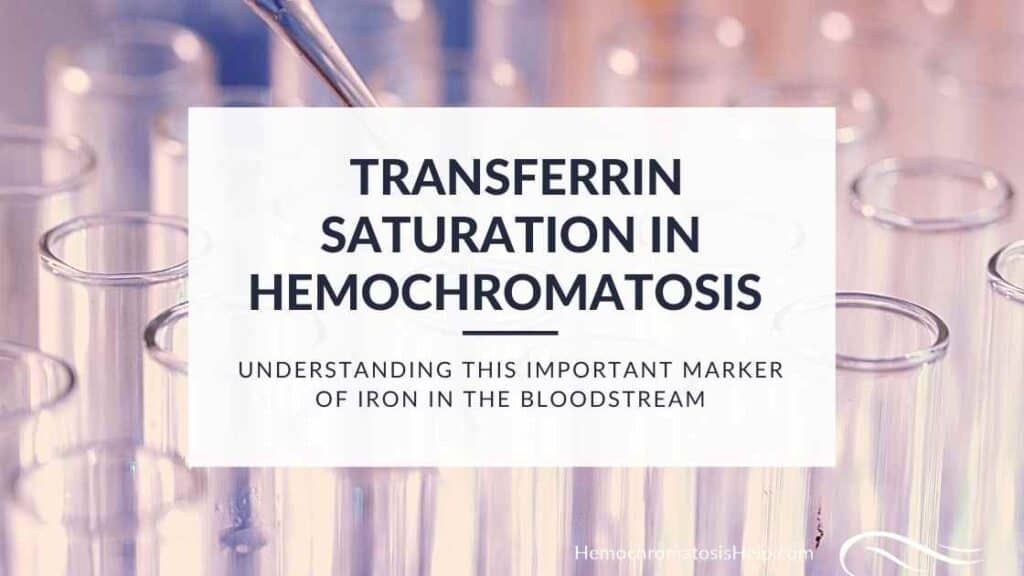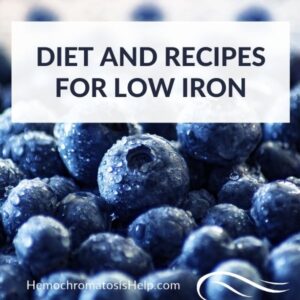Transferrin Saturation in Hemochromatosis
In hemochromatosis, an important lab marker is the transferrin saturation percentage. Because the body is constantly absorbing more iron from food than it needs to, there is a constant influx of iron into the blood.
Transferrin attempts to keep up with this excess by rapidly binding and transporting iron to the cells. As a result, the percentage of transferrin proteins binding iron increases as the available transferrin becomes more and more saturated with iron.
Therefore, an elevated transferrin saturation percentage is highly indicative of iron overload and may help diagnose and monitor hemochromatosis.
What does “Transferrin Saturation” mean on my lab test?
Transferrin Saturation (TS%) is a common lab test that can give us insight into diagnosing hemochromatosis and the state of iron overload in our bodies.
The number you see listed as “Transferrin Saturation %” on a lab test is actually an equation that divides serum iron into total iron-binding capacity (TIBC) and then multiplies by 100. This value represents the percentage of how much iron is bound to the blood protein transferrin.
Family Practice Notebook, a reference guide to primary care health providers, states that transferrin saturation is often the first lab test to change in hereditary hemochromatosis:
My Story & Transferrin Saturation
An elevated transferrin saturation, along with elevated serum iron, was the first clue that I had iron overload disease.
Because this lab test number was high, I checked for the HFE gene’s presence for hereditary hemochromatosis. Bingo!
Interestingly enough, I took a look through my prior lab tests from years past. No doctors or health care practitioners that I saw in the previous decade had ever checked an iron panel, much less my ferritin level, transferrin saturation, or TIBC. I had no reason to fear iron, or so I thought…
I searched further back and came across lab tests done by a naturopathic doctor on me when I was in my mid-20s. To his credit, he ordered a full iron panel for me. My serum iron, ferritin level, and TIBC were all within the normal lab ranges.
My TS% was normal, but only a percentage point or two away from being considered elevated. Alas, no further diagnostic workup was ordered. However, the warning signs were present, and I was only in my 20s (when iron panel levels should be perfect… not bordering on elevated).
Additionally, my Red Blood Cell count (RBC) was elevated, which indicated hemoconcentration, or “thick blood.”
Hindsight is always 20-20, yet my ferritin level, transferrin saturation, and lab tests are a good example of how potentially confusing iron overload lab tests can be, and how the circumstance of the person, their environment, their symptoms, and their age all factor into the equation.




